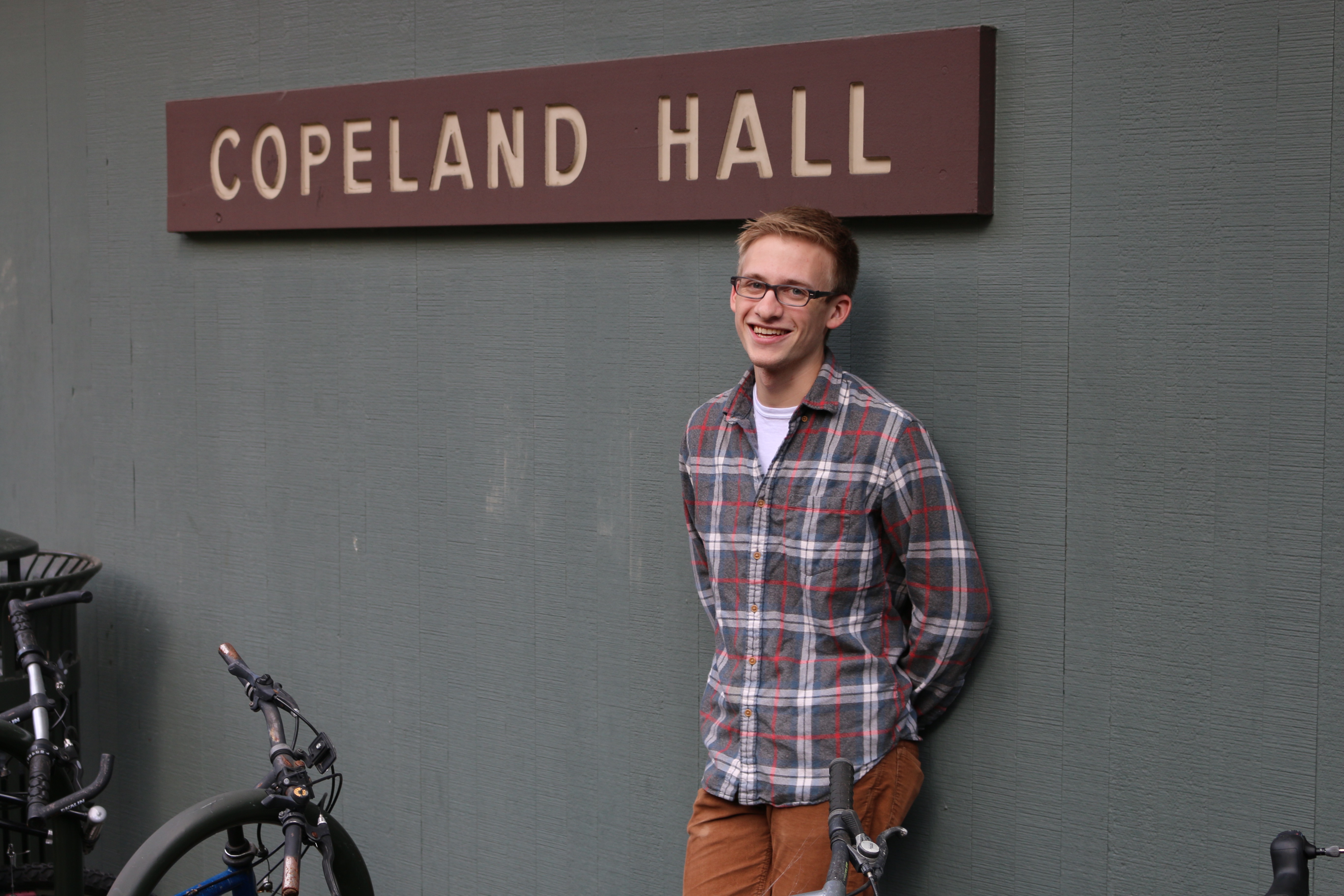
A brief look into what it’s like to be one of the pillars of the Lewis & Clark community
By ALTHEA BILLINGS
In the three years as a Resident Advisor (RA), Nick Laycox ’16 reflected positively on his work as an RA. “I’ve worked in SOA, Holes/Hartzfeld in the apartments over the summer and in Copeland,” Laycox said.
After his involvement in a disruptive incident during his first year and seeing how it affected his fellow students, Laycox was inspired to become an RA.
“Wow, I just made someone uncomfortable where they live. That was the crappiest feeling. This is your new home and you don’t feel comfortable being here,” Laycox said. “What do you have here? What is your support if where you’re supposed to call home isn’t a comfortable space for you?”
RAs certainly have an enormous impact on the campus community. Any student who lives on-campus has an RA, and that person occupies an amalgamation of roles. The highlight for Laycox is sitting down with and getting to know his residents.
“Sometimes those conversations are only a half hour and sometimes they’re two hours, and we go into these huge life philosophies and these stories about our lives. It’s just really cool to be in a position where you have the authority to have those conversations and people are expecting those conversations, so they come a bit more naturally,” Laycox said.
Resident Advisors are in a position of responsibility, in a way that sometimes conflicts with their residents. Laycox reflects on this role, saying, “conduct enforcement can be my least favorite ‘cause it separates us from the student body a lot… and it makes me feel a good bit like an other, rather than as a part of the group.”
The occupation of an outsider position extends beyond writing up a conduct violation. Due to laws like the Family Educational Rights and Protections Act (FERPA), RAs like Laycox are often limited in what they are able to disclose of their experiences.
“You might have something that’s bothering you and want to talk about it but you can’t really. Or the people you can talk about it with are not the ones you want to talk to about it. Having to hold some confidentiality can also separate us from the rest of the student body,” Laycox said.
Talking to residents can have its downsides too, especially if the conflict isn’t resolved. Laycox looks for closure, and sometimes there isn’t any.
“I’ll work with a student for a really long time and work through a lot of problems with them and it doesn’t solve all of them. It might make some stuff better temporarily, and I might be able to get them connected to Counseling Services or Student Support Services and at the end of the day they still decide to transfer,” Laycox said. “It’s not really like I lost, but it always feels like a defeat. I’ve had some people that I’ve worked with and gotten really close to and [then] withdraw in the middle of the semester.”
In addition to being the Lead RA of Copeland, Laycox also works as an Emergency Medical Technician (EMT). In some ways it seems like his job as an EMT has similar gratifications to his work as an RA.
“It can be again, very challenging, but it can also be very rewarding. And I very much enjoy going to work. I work very weird hours and sometimes I have to go to work with very little sleep and that can put you in a place of not enjoying what you do, but I still love it, although I guess that’s a bit masochistic. It’s just really rewarding, being able to have an impact in someone’s life, even if you don’t do a lot for them, even if they don’t require a lot, a lot of times no one else is really there for them,” Laycox said.
Between his job as an RA and as an EMT, as well as being a senior here at LC, Laycox admits that at times, life can get hectic and there is a great deal of fluctuation. In order to stay on track, he plans everything at least two weeks in advance.
“There are some weeks where it’s like — what am I doing? You have busy weeks as an RA, and you have weeks that just inherently aren’t as busy, you can go from a 20 hour week as an RA to a five hour week, you just don’t know,” Laycox said. “You can go from having a light week, to having a week where for some reason everyone in your hall needs a little bit of support.”
But being an RA has led Laycox to better people skills, which he applies across the factions of his life. Being a good communicator makes for good talks with family back home, and it also applies to his job as an EMT.
“It helps when I’m talking to people about death,” Laycox said, since many of his patients are elderly.
In the life after being an RA, some go on to study Student Affairs in graduate school, but regardless of the field of study or work after college, the network of RAs is expansive.
“As you begin to talk to people outside of Lewis & Clark, in work environments, you’re undoubtedly going to find people who were RAs, and you immediately connect and share your experiences, because it is a fairly strong experience,” Laycox said.
Subscribe to the Mossy Log Newsletter
Stay up to date with the goings-on at Lewis & Clark! Get the top stories or your favorite section delivered to your inbox whenever we release a new issue.

Leave a Reply